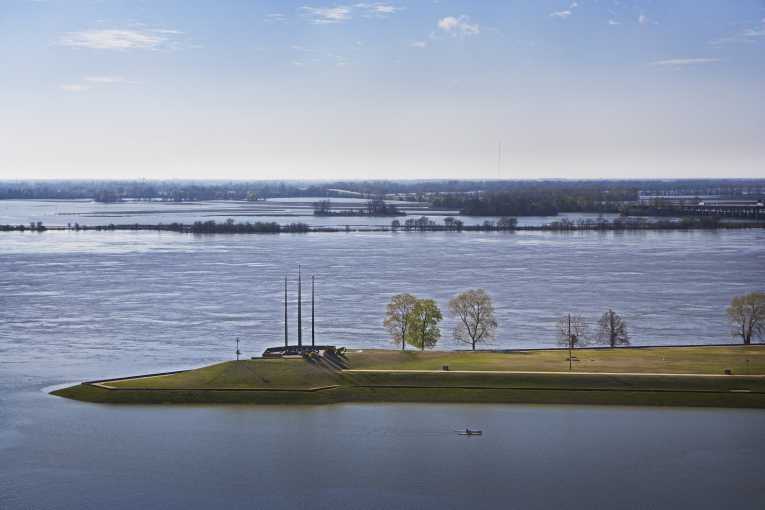Mulroy's speech is timely: it comes amidst her agency's struggle to build another pipeline, which would tap an aquifer in Snake Valley and transport it 285 miles to Las Vegas in order to minimize the risk associated with depending solely on the Colorado River. On July 14, the Bureau of Land Management released the Draft Environmental Impact Statement, which concluded that the project would have significant adverse environment and economic impacts. While the Draft EIS was being written, the SNWA began construction of Intake No. 3, a third, much lower raw intake tunnel on Lake Mead due to falling lake levels that may render obsolete the other, higher intakes. The cost: $700m.
The SNWA is in a bind, and it appears it is seriously considering looking to the East. The idea seems outlandish, but it's not new. Schemes to build East-West water pipelines have been proposed before; one Colorado rancher and engineer, Gary Hausler, even went so far as to draw up a plan and a cost estimate ($23b) and pitch it to politicians, who largely scoffed at the idea. But Mr Hausler still hawks his plan and calls it a win-win-win: the stress on the Colorado River system is relieved, flooding along the Mississippi is minimized, and the project creates thousands of job, proving a much needed economic boost.
The seeming outlandishness of such a scheme is further called into question by the predictions of Citigroup's top economist, Willem Buiter, who sees the water market exceeding oil within 20 to 30 years. As result, according to Mr Buiter, we will see the invisible hand of the market build massive water projects,including a network of pipelines whose volume will exceed that of oil, as investment skyrockets.And some more facts to consider when thinking about Ms Mulroy's proposal: California, which is highly dependent on Colorado River water, is the 8th largest economy in the world and comprises a whopping 13% of the the total US GDP; studies indicate a 50% chance of Lake Mead going dry in the coming decades and decreasing river flows; and the 2010 Census indicates an ongoing westward population shift. Based on these facts, it is not unreasonable to conclude that California, and the Southwest in general, is in water crisis and, accordingly, the states' and the country's economies are at risk. Drastic measures, such as an East-West pipeline, may result, in an effort to salvage an already ailing economy.
China, experiencing a similar situation and unencumbered by due process, is building the largest water project ever, the benignly named South-North Water Diversion Project. The project, at a cost of $62b, will divert water from rivers in the south, a mainly wet area, and transport it to the arid north, including Beijing, which is the heart of the country's rapid economic expansion. Beijing and other major cities in the north, which is slowly but surely being infiltrated by the expanding Gobi Desert, are experience severe water shortages: Beijing has lost a reservoir, the others are dwindling, and rampant groundwater pumping has resulted in land subsidence and crop damage. Desperate times call for desperate measures, so the Chinese, in an act of economic salvation, have initiated the massive project, which entails the displacement and relocation of 350,000 residents and, much to the ire of India, the diversion of billions of gallons of water from the Brahmaputra River, which the Indians depend on for water supply and transport. The Chinese have, at least so far, scoffed at the idea of a water sharing agreement proposed by an alarmed India. Legal and political unrest will surely ensure. And the environmental and social consequences could be drastic.
Ms Mulroy's East-West water pipeline may result in similar impacts if it were ever realized. But the project would be tied up in courts and in the permitting process for years and possibly decades; Mr Hausler estimated that his plan would take 30 years. States would battle endlessly to protect their water rights. The environmental impacts would be massive. But such a scheme could create jobs and possibly save an ailing economy by averting a water disaster. Hence the interest of the US Chamber of Commerce, who carry significant political weight and whose sole responsibility is to protect the economy. Perhaps, if they lobby hard enough, what was once considered outlandish will become reality.
Top Image Credit: Kayaker on Flooded Mississippi River © Etrayne04










